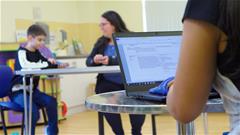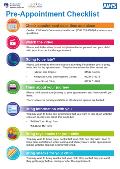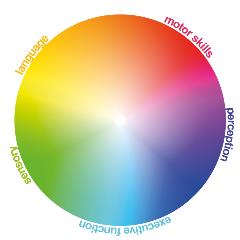Your child will be assessed by a paediatrician and one or two of the following professionals depending on your child’s assessment needs. These professionals can include:
- A highly specialist speech and language therapist (SALT) who specialises in Autism
- A clinic nurse specialist
- A clinical psychologist
What are we looking for?
The areas that we focus on to gather evidence of an ASD/C are:
Communication skills: difficulties using and interpreting speech, ability to express themselves using words and gestures
Social interaction skills: difficulties expressing emotion and recognising or understanding the feelings and intentions of others (‘reading’ other people), ability to relate with family members and interact with other children.
Repetitive behaviours and activities : being highly focused on particular subjects, objects, routines and rituals.
We will also consider sensory sensitivities and any other difficulties that are affecting their lives.
The paediatrician will ask you some detailed questions about your child’s developmental history and current concerns.

The other team members (speech language therapist/nurse specialist/clinical psychologist) will observe how your child behaves, plays or does tasks while in the clinic. This may include an autism-specific assessment such as an Autism Diagnostic Observation Schedule (ADOS) .
We have had to change the way we do the assessment during Covid and that was why a new assessment called the Brief Observation of the Symptoms of Autism or BOSA was developed. The main difference is that parents or carers play the games or carry out the activities with their child. We as clinicians sit in the back of the room to observe and make notes. Click on the link to find out more about the
BOSA.
Other assessments and observations might include:
- Observations in your child's nursery and school
- Your child may require assessment by other professionals such as an educational psychologist.
What have we learnt and what do we need to do next?
At the end of the assessment process (there may be more than one appointment), and once we have reviewed the information gathered from various sources, we will have a better understanding of your child’s:
- Strengths and needs
- Behaviours and skills
- Interests and difficulties
We will then arrange an appointment to discuss your child's needs and behaviour, and whether they meet the criteria associated with the condition that we were assessing for. Some children do not fulfil the criteria for a specific neurodevelopmental diagnosis. If your child does not receive a specific diagnosis, we will discuss the reasons with you and, if we can, give you another explanation for your child’s difficulties.
Either way we will provide information to help you find appropriate ongoing support and will give you recommendations for any specific issues you’re experiencing.
You are welcome to invite a member of staff from nursery/school or a friend/colleague or family member if you think their support will be helpful. Please click on the link for
Pre-Appointment Checklist and further information about appointments.
A guide to ADHD for Parents and Families
The Autism Wheel

Imagine the autistic spectrum, is not just a set of colours or ‘types of autism’ but also all the different autistic traits that make up how any one person experiences autism.
The circle of colours is like a colour picker with several different sliders under it, each of which can be used to control one aspect that makes up the colour selected. No one slider on the colour picker explains the spectrum above it. The only way to fit that diverse and complex circular colour space into a linear scale is to break it down into lots of individual traits, each with their own slider. Together the interactions of all the sliders combine to produce a unique colour, and similarly all the different traits of autism combine together in different ways to create all the diversity within the autistic spectrum.
Extract from: https://graphicexplanations.info/2013/09/13/understanding-the-spectrum-in-autistic-spectrum/
It is important to recognise that support, needs and skills can vary depending on what is happening in that child's life.
What do you think of this Neurodiversity Support Pack? - please let us know if there is anything we can improve on or if you have any suggestions for content by clicking on this link
How to use the Neurodiversity Support Pack
All the pages in this pack can be translated into your native language as text or audio via our Recite feature which you will find at the top of each page. The translated page can also be downloaded. More information about using our translation service can be found by
clicking here.